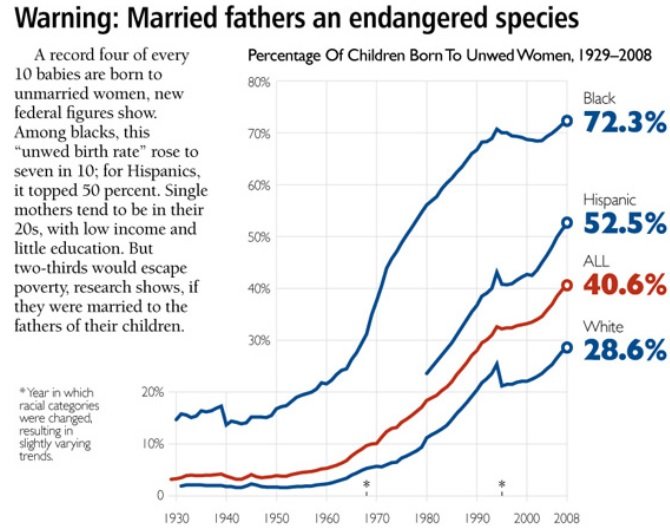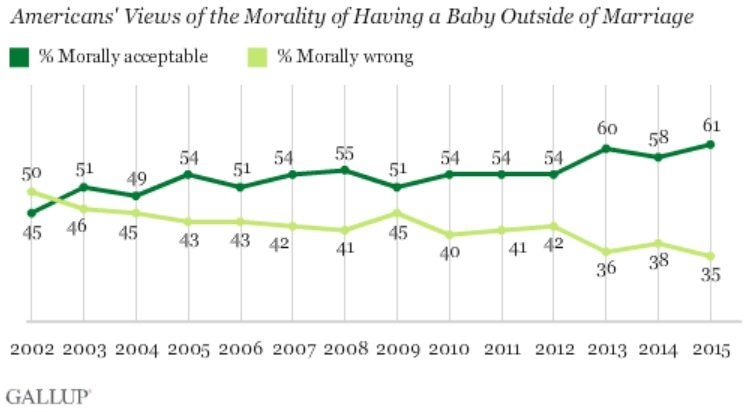The Importance of Two Parent Households — Examining The Evidence
Science-Based Analysis of Two Parent and Single Parent Households- August 31, 2018
- two parents
- Posted by admin
- Leave your thoughts
Old wisdom existed in many forms but no traditional societal institution has been more cherished and valued across the world than marriage. For thousands of years, marriage was upheld as a non-negotiable legal, religious, and social contract necessary for the recognition of romantic relationships between men and women.
At its roots, marriage is a means of enfranchisement. Lifelong monogamy gives the largest possible share of both men and women a stake in the future prosperity of their communities. Having children gives a father and mother a profound reason to invest in tomorrow — knowing that their legacy will continue for generation(s) to come.
It has also been known for millennia that children need two parents to maximize their chances of flourishing socially and economically. A combination of strong female and male role models help give children a variety and depth in their experiences with adults.
Evidence playing catchup
As with many ancient rites, modern day, scientific evidence on marriage is playing catchup with established doctrines of old. While various societies around the world have upheld this institution as a sacred and largely binding pact, the western world has loosened marriage by expanding its definition and making it easier to break.
For instance, no-fault divorce is a largely European and American phenomenon. Although it traces its roots in the USA back to 1970s California, no-fault divorce remains a new and novel addition to marriage laws that have their roots in ancient societies.
Meanwhile, more and more children are being born out of wedlock:

Societal opinions of children born outside of wedlock are changing too:

It is worth noting that the tidal change in societal norms is based on the unprecedented modern experiment with breaking down and nullifying the importance of marriage.
Today weddings exist in significant part as a chance to “show-off” one’s supposed romantic fairytale. They have been secularized and co-opted by mass media and the lucrative wedding industry as a means of shifting the definition of marriage itself and cashing in on its existence. The jewelry industry makes more, not less, money when a married couple goes their separate ways to find new love.
But reconnecting with the old meaning of this institution goes far beyond economics. A strong, married couple are the bedrock of a well-functioning society with hopeful, prosperous, and well-equipped youth.
This 2014 study examined huge chunks of existing literature on the topic and identified many key risks of marital breakdown. Children lose out in multiple ways:
- Loss of quality time with one or both parents
- Loss of financial backing and greater risks of poverty
- Exposure to emotional turmoil
- Children in one parent homes are less likely to adapt and mature in the face of life challenges
- Greater risk of experiencing divorce or having children out of wedlock themselves
- Loss of religiosity/abandonment of faith
- Lowered physical health
This abundance of risks to the child are enough reason to seek reform of marriage and divorce in and of themselves. Poverty in the family sharpens the risk of a child becoming involved in gang activity. Even if a child steers clear of criminality, they may still be forced to abandon higher education in order to provide for themselves, their family, or their younger siblings.
Divorce and broken families also create a vicious cycle of ongoing failure in the formation of healthy families. Although the overall picture is complex, it is well established that children of divorce are more likely to experience marital turmoil in their own adult lives.
Adults also suffer from divorce in many ways too. Being happily married confers all kinds of social and health advantages on the individual. The study shows that:
- Married people are less likely to smoke and less likely to abuse alcohol
- Divorce increases suicidality in men
- Diabetes and heart disease are lower in married men
- Married people have higher average incomes
- Married women are less likely to experience violence than divorced or separated peers
- Community engagement is higher in married people
- Adverse emotional effects are common from the psychological fallout of divorce
Many of these ideas that have existed for centuries have only recently been vindicated by solid scientific research. The nuclear family is the most profound form of enfranchisement in communities. It gives individuals a strong support mechanism and the incentive to build a community that not only works for them but for their family too.
The health advantages that marriage confers on individuals are also serious, with longevity itself seemingly linked to marital success.
Last but not least, society loses out through:
- A future generation of less competent adults
- A weakened institution of marriage
- Earlier sexual experimentation in children of divorce leading to younger pregnancies
- The diminished role of faith and religion in people’s lives
- Reduced educational attainment
- Reduced household incomes
- Higher risk of emotional and mental health issues
- Increased crime rates and substance abuse
- Greater disruptive behavior in schools
The report concludes by stating that the estimated yearly cost of divorce to society is in the region of $33bn. Adolescent pregnancies cost a further $7bn per year.
The author also points out the “clear” negative long-term consequences of marital failure on all stakeholders.
How to Restore Marriage for the 21st century
- The stresses and strains of the workplace can place unbearable pressure on families. Our report on this subject proposes many practical measures that can serve to reduce the burden placed upon parents when juggling life and work. It is our belief that flexible scheduling and home-based working options are both helpful measures in certain situations. Paternity leave is also an extremely useful benefit that can reduce the difficulty of caring for infants and helps to cement family bonds.
- The definition of marriage should be protected from ongoing expansion. Same-sex marriage should be dealt with on a state-by-state basis. Infidelity is rampant in same-sex relationships and this further undermines the vow of faithfulness that underpins marriage.
- No-fault divorce should be reined in and marriage counseling encouraged to keep more couples together through good times and hard times.
- We must craft a tax system that is clearly advantageous to married couples. In the past, we have been in a situation where married couples pay more in tax than they would have if they were single. This is not a conscionable practice and we must strive to ensure married couples are not disadvantaged by their marital status.
